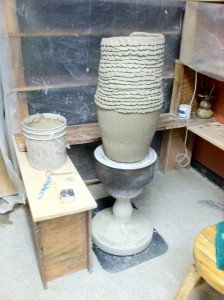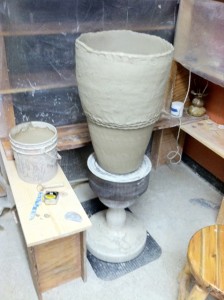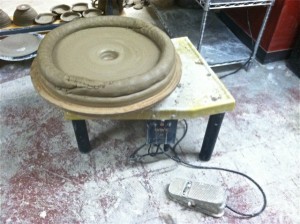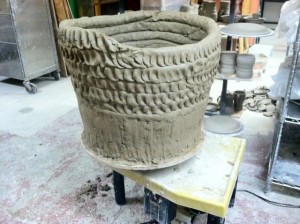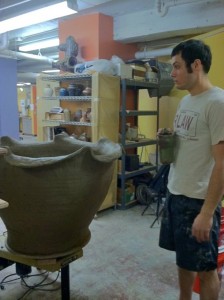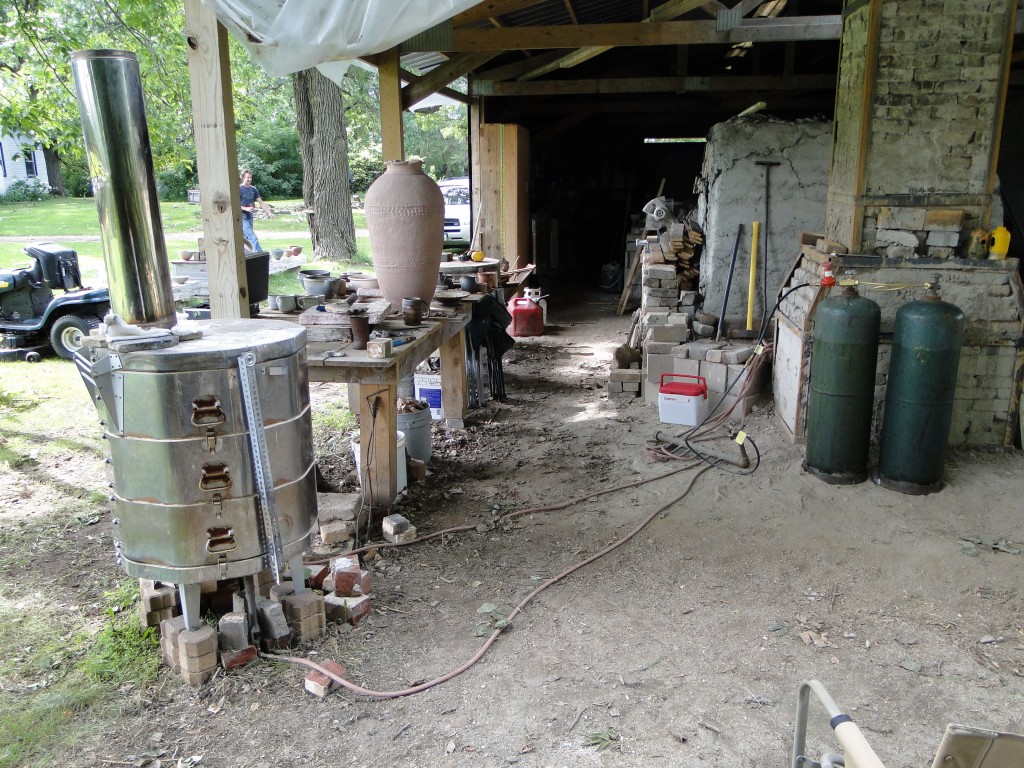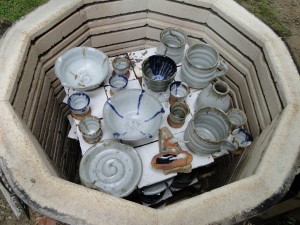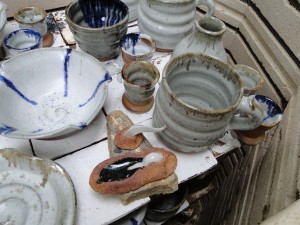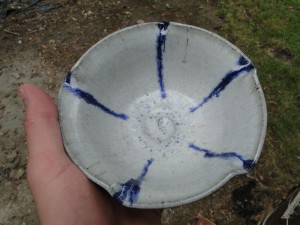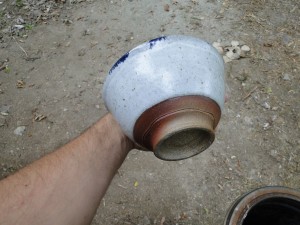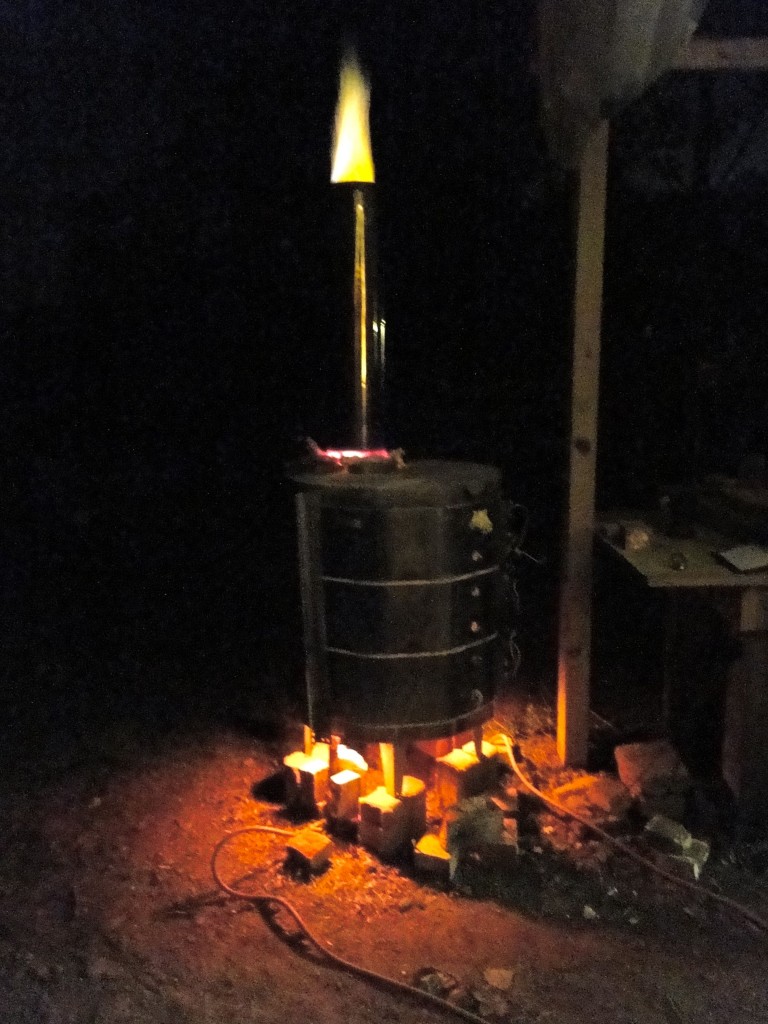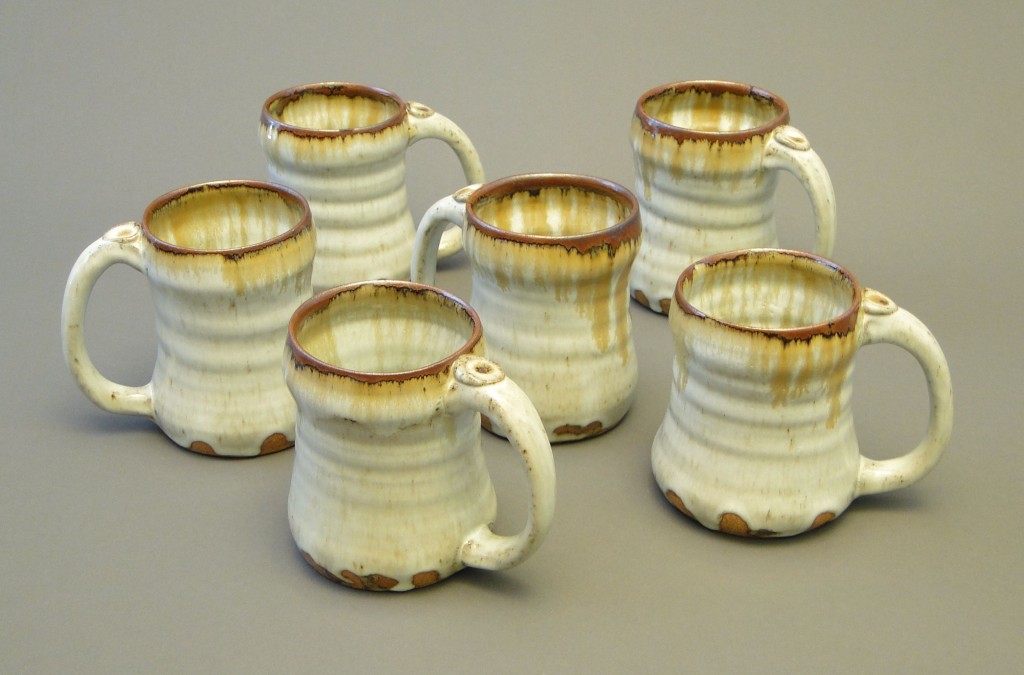Coil building was one of the first pottery techniques I learned, but it’s not something I do everyday or even every month. I like to use coil building for HUGE pots that are too big to throw.
I generally throw the bottom of the pot as big as I can, usually with a 20-40 pound lump of clay. The image on the left shows a pot that was thrown from 25 lbs. of clay and about 12 inches high, before I coiled up another 12 inches.
It’s a lot easier to coil a narrow shape than a wide shape, as wider pots tend to get off-center and want to collapse. I add the coils on top of each other by pinching the new coil into the clay below. My thumb leaves an interesting pattern from this process, and I generally keep this texture as decorative banding lines in the large jars. The image on the bottom left shows the coils after they have been smoothed together. You can see how the smoothing process also begins to form the pot’s profile.
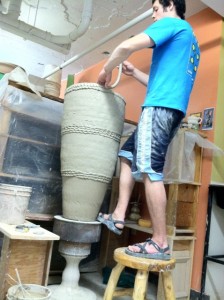 Compared to throwing a pot on the wheel in a matter of minutes, coil building is a much slower process. The profile of the pot forms over a matter of hours, as the 2-3 foot long coils are individually rolled out and successively added on top of each other. The pot below was made with extremely thick coils to form a planter.
Compared to throwing a pot on the wheel in a matter of minutes, coil building is a much slower process. The profile of the pot forms over a matter of hours, as the 2-3 foot long coils are individually rolled out and successively added on top of each other. The pot below was made with extremely thick coils to form a planter.
I started with a 35lb. mound of clay for the bottom, thrown 1.75 inches thick. I left a hole in the middle for water drainage in the finished planter. Then, I rolled 2 inch thick coils and paid careful attention when smoothing them together. The finished planter used about 410 lbs. of clay and with the help of some Red Hot Chili Peppers on shuffle, this pot formed in just under 5 hours. About 100 lbs. of water will evaporate from the clay before the firing, hopefully over the course of 2-3 months to avoid drying cracks.
Another way I often build BIG pots is by throwing pottery shapes, like large bowls and cylinders, and stacking them on top of each other. These combination stacks grow a lot faster but I tend to make these pieces a bit smaller and reserve coil building for the huge pots.

